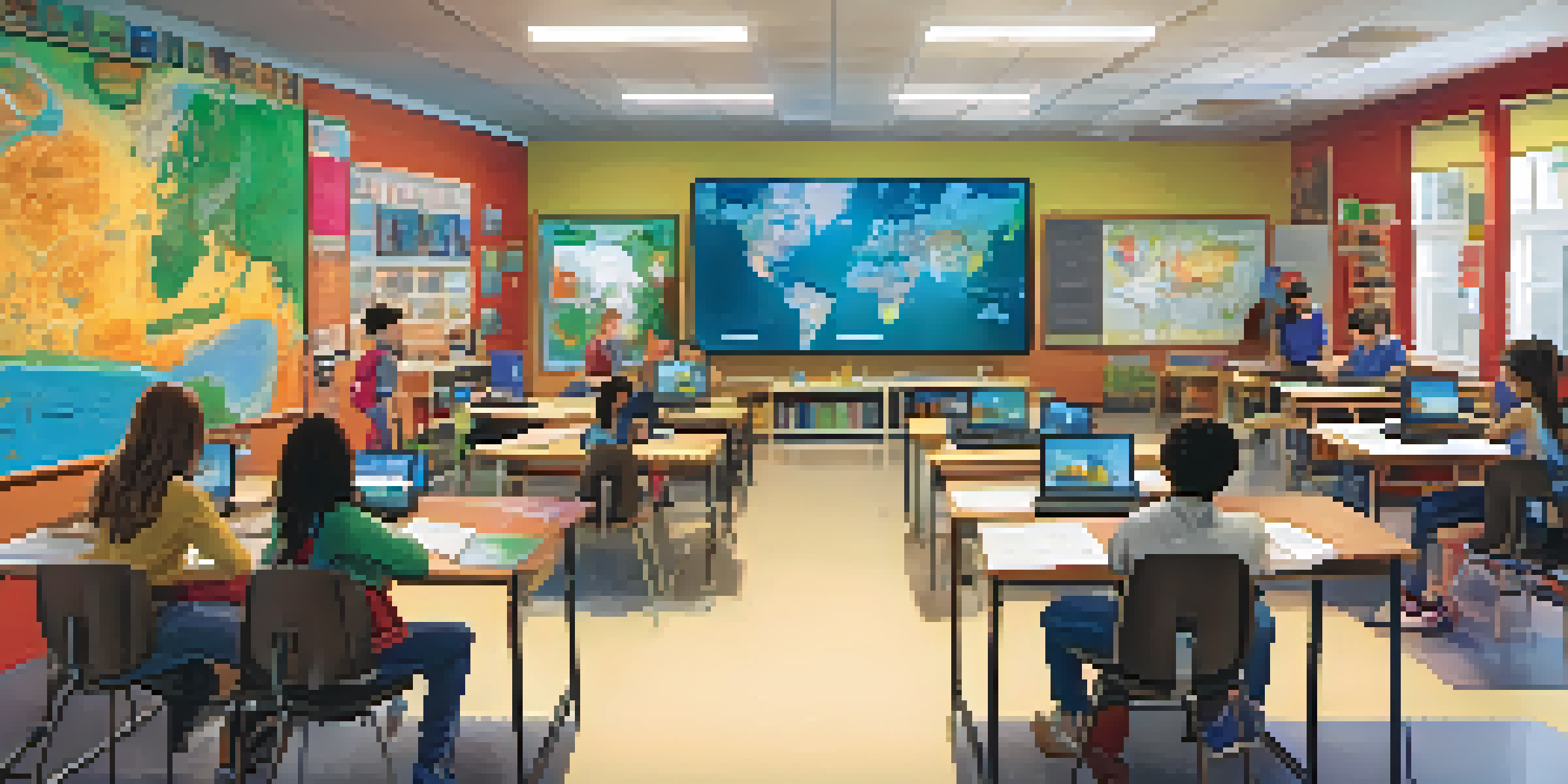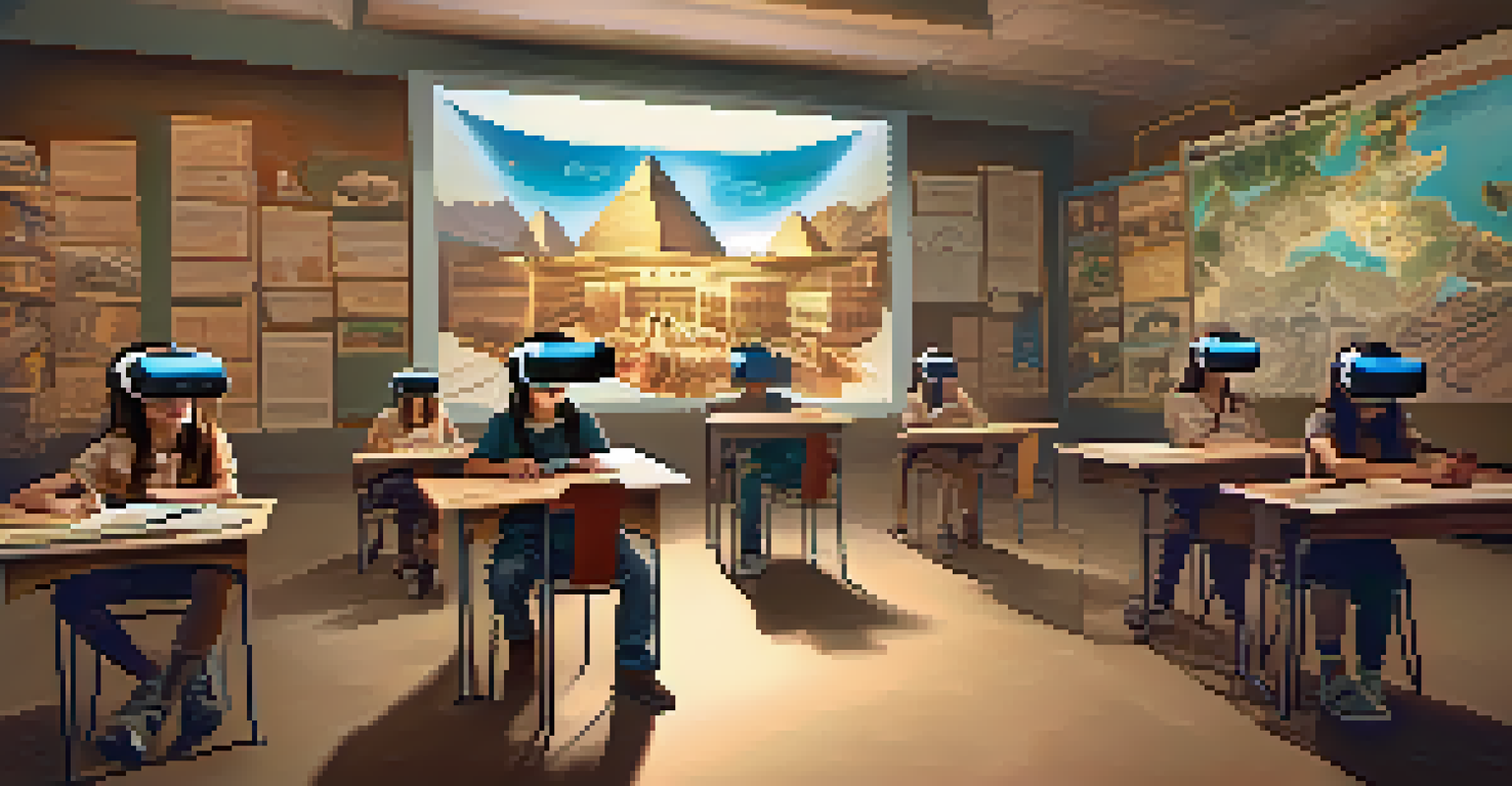Transmedia Learning: Engaging Today's Learners Effectively

Understanding Transmedia Learning and Its Importance
Transmedia learning refers to an educational approach that utilizes multiple platforms and formats to engage students. This method recognizes that learners absorb information differently, making it essential to provide content that resonates with diverse audiences. By integrating storytelling across various media, educators can create immersive experiences that enhance comprehension and retention.
The future belongs to those who believe in the beauty of their dreams.
For example, a history lesson might include a documentary, a podcast, an interactive website, and a fictional novel. This variety not only caters to different learning styles but also encourages students to explore subjects in greater depth. The more avenues learners have to engage with a topic, the more likely they are to develop a genuine interest.
In today's fast-paced digital world, where attention spans are shorter, transmedia learning is particularly relevant. It offers a dynamic way to present information, making it more appealing and accessible for today's learners who are accustomed to consuming content across various platforms.
How Transmedia Learning Engages Different Learning Styles
Every student has a unique way of learning, whether they are visual, auditory, or kinesthetic learners. Transmedia learning provides a rich tapestry of experiences by tapping into these different styles. For instance, visual learners might thrive on videos and infographics, while auditory learners may benefit from podcasts and discussions.

Consider a science lesson on ecosystems: a student could watch a documentary, participate in a hands-on experiment, and read articles on the topic. This multifaceted approach not only keeps students engaged but also reinforces their understanding through varied formats. It allows learners to grasp complex concepts from multiple angles, enhancing overall comprehension.
Transmedia Learning Engages All Styles
By utilizing various media formats, transmedia learning caters to different learning styles, enhancing student engagement and comprehension.
By recognizing and catering to these distinct learning styles, educators can foster a more inclusive classroom environment. When students feel their preferred methods are acknowledged, they are more likely to participate actively and retain information.
The Role of Storytelling in Transmedia Learning
Storytelling is at the heart of transmedia learning, transforming information into relatable narratives. When educators weave stories into their lessons, they create emotional connections that make the material more memorable. This method can turn dry facts into engaging tales that resonate with students, fostering a deeper understanding.
Tell me and I forget. Teach me and I remember. Involve me and I learn.
For example, a lesson on climate change might include a fictional story about a family's struggles with environmental changes. This narrative approach allows students to empathize with characters, making the issue feel personal and urgent. When learners can see themselves in a story, they are more likely to internalize the message.
Additionally, storytelling encourages critical thinking as students analyze plots, character motivations, and themes. It nurtures discussions and debates, enhancing collaborative learning. Through transmedia storytelling, students not only consume content but also become active participants in their educational journey.
Creating a Transmedia Learning Experience
Designing a transmedia learning experience requires careful planning and creativity. Educators should begin by identifying the core message or subject they want to convey. From there, they can brainstorm various media formats that could enhance the learning experience, such as videos, interactive games, or social media campaigns.
Collaboration is crucial in this process, as involving students in the creation of content can lead to richer outcomes. For instance, a group project might involve students creating a short film, designing a website, or writing a blog that explores their chosen topic. This not only empowers students but also fosters teamwork and communication skills.
Storytelling Enhances Learning Impact
Incorporating storytelling into lessons fosters emotional connections, making complex topics more relatable and memorable for students.
Furthermore, educators should assess the effectiveness of their transmedia approach by gathering feedback from students. This iterative process helps refine future lessons, ensuring they remain engaging and relevant. By continuously evolving their strategies, educators can better meet the needs of their learners.
Challenges and Considerations in Transmedia Learning
While transmedia learning offers numerous benefits, it also presents challenges that educators must navigate. One significant hurdle is the potential for information overload; with so many formats available, students might feel overwhelmed. It's essential for educators to curate content thoughtfully, ensuring that each component serves a clear educational purpose.
Another consideration is the varying access to technology among students. Not all learners may have equal opportunities to engage with digital resources, which can create disparities in learning experiences. Educators must find ways to make transmedia content accessible, perhaps by providing alternative formats or ensuring that resources are available in multiple locations.
Additionally, educators should be mindful of students' engagement levels. Not every student will resonate with every medium, so it's crucial to foster an environment where learners feel comfortable expressing their preferences. By encouraging open dialogue, educators can adapt their approaches to better suit the diverse needs of their classroom.
Measuring the Success of Transmedia Learning
Assessing the effectiveness of transmedia learning can be complex but is vital for continuous improvement. Traditional assessments, like quizzes and tests, might not fully capture the depth of understanding fostered by transmedia approaches. Instead, educators can utilize diverse evaluation methods, such as project-based assessments and peer reviews.
For instance, students could create presentations or portfolios showcasing their learning experiences across various media. This allows educators to evaluate not just knowledge retention but also creativity and critical thinking skills. By focusing on students’ ability to synthesize information from different sources, educators gain a clearer picture of their progress.
Future Innovations in Education
Technological advancements like virtual and augmented reality promise to further enhance transmedia learning experiences, making education more immersive and engaging.
Feedback from students is also crucial in measuring success. Surveys and discussions can provide valuable insights into which aspects of the transmedia experience resonated most. By analyzing this feedback, educators can refine their methods and ensure that future lessons remain engaging and effective.
The Future of Transmedia Learning in Education
As technology continues to evolve, the potential for transmedia learning in education will only expand. Virtual reality, augmented reality, and interactive platforms are just a few examples of how educators can further enhance student engagement. These innovations can create immersive learning environments that transport students into the subject matter.
Imagine a history lesson where students can virtually walk through ancient civilizations or a science class that allows them to explore the human body in 3D. Such experiences can transform education, making learning not just informative but also exhilarating. The future holds exciting possibilities for creating even more connection and engagement.

However, as we embrace these advancements, it's essential to maintain a balance between technology and traditional learning methods. Blending the old with the new ensures that we cater to all students and uphold the core values of education. By staying adaptable and open-minded, educators can harness the power of transmedia learning to inspire the next generation.